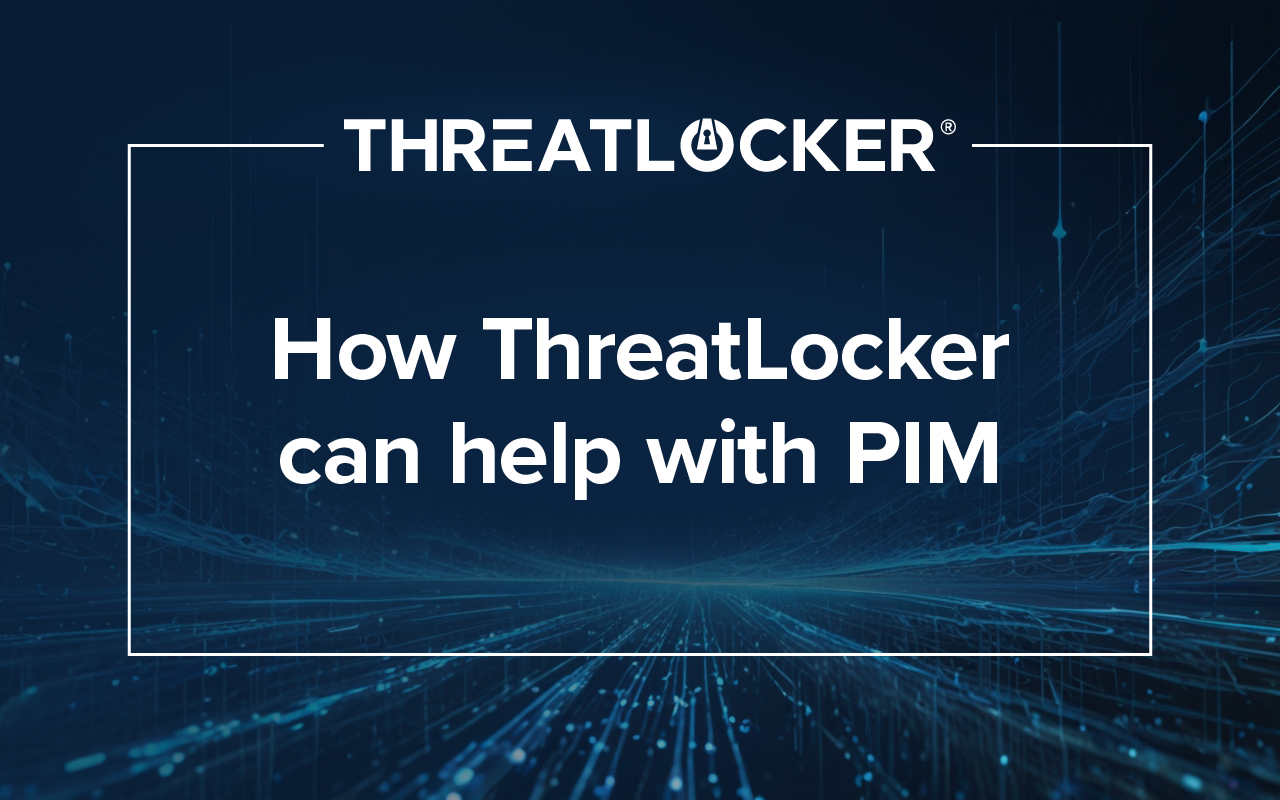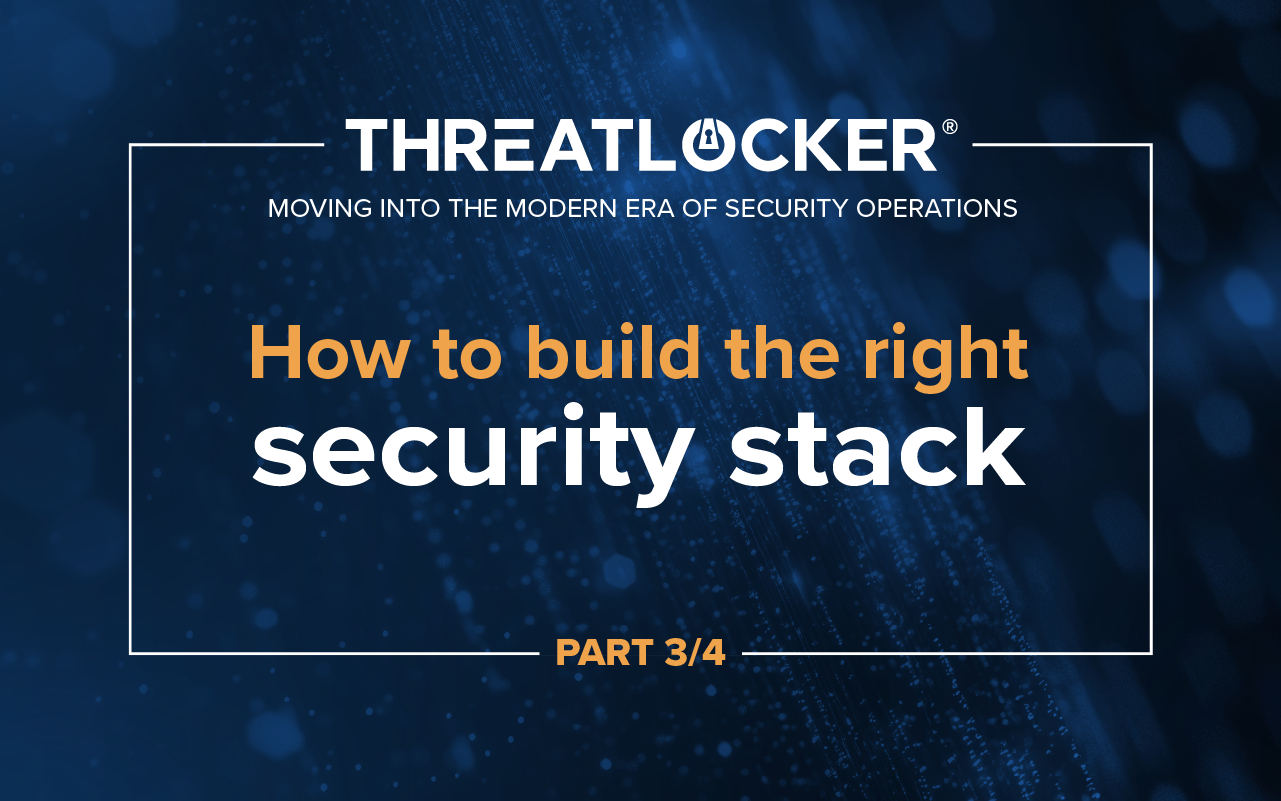Table of contents
Contents
- Data obfuscation safeguards sensitive information by transforming it into an unreadable form.
- Techniques like encryption, masking, and tokenization are used for data obfuscation.
- Data obfuscation is used in various sectors, including healthcare, finance, software development, and government.
- While data obfuscation offers numerous benefits like enhanced security and regulatory compliance, it also presents challenges like complexity and performance impact.
- ThreatLocker® enhances data security with a Zero Trust approach and features like application allowlisting and Ringfencing™.
Protecting sensitive data is a top priority for any organization handling customer, employee, or patient information. This is where data obfuscation steps in as a powerful safeguard. It essentially scrambles confidential details to keep them out of the wrong hands.
By employing techniques like anonymization, encryption, and masking, data obfuscation effectively disguises sensitive details. This makes it far more challenging for unauthorized parties to access and exploit.
This guide will break down data obfuscation in plain terms, helping you understand its importance and how it can be used to bolster your data security efforts.
Understanding data obfuscation
In simple terms, data obfuscation disguises sensitive information, making it useless to anyone who shouldn't have access. However, it's still usable for its intended purpose.
It's similar to scrambling a confidential message so that only those with the proper 'decoder' can decipher its true meaning.
We’re in an era where cyberattacks are a constant threat. The need to protect sensitive information cannot be overstated.
Data obfuscation adds a crucial layer of security, making it significantly harder for malicious actors to steal and exploit valuable data such as personally identifiable information (PII), financial records, or intellectual property.
Data obfuscation meaning: Diving deeper into the concept
Data obfuscation uses a variety of techniques to transform data into a less intelligible form. These techniques can include:
- Encryption: Scrambles data using complex algorithms, requiring a key to decipher it.
- Masking: Swaps out sensitive data with fake but believable substitutes.
- Tokenization: Replaces sensitive data with unique identifiers (tokens) that hold no real value on their own.
- Anonymization: Removes or modifies identifying information from data.
- Shuffling: Rearranges data elements within a dataset.
- Perturbation: Introduces random noise or variations to numerical data.
Data obfuscation techniques can be useful in many situations.
For instance, during software development and testing, it protects code and data from unauthorized access and reverse engineering attempts.
When sharing data for analytics or research, obfuscation also lets organizations protect individual privacy.
Data masking vs. data obfuscation
While data masking is a subset of data obfuscation and they both protect sensitive information, there are situations where data masking is the preferred method of obfuscation.
Data masking is ideal when you need to safely test a new application, but do not want to risk sensitive data like names and banking information. With data masking, you swap out your data with realistic, fake data that mimics the original without exposing sensitive information.
Other data obfuscation methods are fantastic for cases where you need to protect data while preserving its structure and format, such as for analytics or data sharing. For instance, you could encrypt or tokenize sales data before sharing it with a third-party analyst, allowing them to analyze it without revealing the actual information.
Benefits and challenges of data obfuscation
Data obfuscation comes with its own set of advantages and drawbacks. Understanding these can help you decide how to use it effectively.
Benefits of implementing data obfuscation
- Enhanced Data Security: Data obfuscation adds a layer of security by making sensitive data unreadable to unauthorized users, reducing the risk of breaches and identity theft.
- Regulatory Compliance: It helps organizations comply with data protection regulations like the General Data Protection Regulation (GDPR) and the Health Insurance Portability and Accountability Act (HIPAA), which require safeguarding sensitive information.
- Facilitates Data Sharing and Collaboration: Obfuscation allows secure data sharing with external partners, researchers, or cloud providers, enabling collaboration without exposing sensitive information.
- Secure Development and Testing: It protects sensitive data in development and testing environments while allowing developers to use realistic data.
Overall, data obfuscation can greatly strengthen an organization’s defenses against data breaches, including insider threats. With the average annual cost of insider threats rising to $16.2 million per organization, as reported by the Ponemon Institute in 2023, taking proactive measures like obfuscation is more important than ever.
Challenges of data obfuscation
While data obfuscation offers many benefits, it's important to be aware of the challenges it presents:
- Complexity: Setting up and managing data obfuscation can be tricky, requiring careful planning and specialized tools.
- Performance Impact: Certain techniques, like encryption, can slow down systems. Choosing the right methods and tools is key to minimizing any slowdown.
- Data Utility: Obfuscation aims to keep data useful, but some techniques might limit its effectiveness for specific analysis or reporting tasks.
- Balancing Security and Usability: Finding the right balance can be tough. Over-obfuscating can make data hard to use while under-obfuscating leaves it at risk.
Navigating these challenges requires a solid strategy and the right tools. It's all about balancing the security benefits with potential downsides and adjusting your approach as needed.
Data obfuscation examples
Data obfuscation isn’t just theory. It’s used by organizations across industries to protect sensitive information and meet compliance requirements. Here are a few real-world examples:
Healthcare
The healthcare industry handles a lot of sensitive patient data, making it a big target for cyberattacks. To protect privacy while still enabling research, techniques like de-identification and pseudonymization are key.
For example, hospitals can anonymize patient records before sharing them with researchers, ensuring individual identities stay private.
Financial services
Financial institutions handle sensitive data like account numbers, transaction details, and personal information. Data obfuscation helps protect this data during transmission, storage, and analysis.
For instance, banks can use tokenization to swap out sensitive card details with unique tokens, lowering the risk of fraud if a data breach occurs.
Software development and testing
When developing and testing software, it’s important to use realistic data that mimics live environments without exposing sensitive information. Data masking is often used to replace real data with fictional but believable substitutes. This way, developers can thoroughly test their applications without compromising security.
Government and public sector
Government agencies handle huge amounts of citizen data, from personal details to tax records and sensitive national security information. Data obfuscation is key to keeping this data safe from unauthorized access and staying compliant with regulations.
For example, agencies can use anonymization to strip out personally identifiable information before releasing datasets to the public.
Retail and e-commerce
Online retailers gather customer info like names, addresses, and payment details. Data obfuscation helps keep this data safe from cybercriminals.
E-commerce platforms can use encryption to protect payment information during transactions, making sure it stays confidential.
These are just a few examples of how data obfuscation is used in the real world. With stricter data privacy regulations and evolving cyber threats, the importance of data obfuscation will only keep growing.
Malware obfuscation
Threat actors also use obfuscation for their malicious purposes. In their hands, malware is obfuscated — meaning that it can be written in a way that can bypass detection by your EDR, AV, and other detection-based tools. Threat actors tailor their code to imitate legitimate user-behavior and not raise any red flags for detection tools to notice and sound alarms about.
Cybercriminals obfuscating malware with AI
Cybercriminals no longer need coding skills to launch malware into your organization. They can purchase malware code, get curated reverse shells from sites like https://www.revshells.com/, or even just ask a generative AI tool to write malware scripts. With the code they generate, threat actors can easily launch a reverse shell onto your corporate devices.
On top of this, threat actors are also using generative AI tools to obfuscate their malicious codes. Each time they fail at gaining control of your devices, they can share notes with the generative AI tool of their choosing to further improve the code.
How ThreatLocker® mitigates obfuscated malware
ThreatLocker allows you to implement controls to prevent unauthorized access to your organization’s data on the endpoint:
- Application Allowlisting: Reduce the risk of data breaches by allowing only trusted and authorized applications to run on your systems and block everything else whether it is obfuscated or not.
- Ringfencing™: Place controls over what your allowed applications are permitted to do and secure the boundaries around sensitive data to limit unauthorized access.
- Storage Control: Set granular policies to protect your data repositories from unauthorized access and block external storage devices, like USBs, from connecting to your machine.
For strong data protection, combine dedicated data obfuscation tools with endpoint protection. This layered approach keeps your sensitive data secure and confidential, even against evolving cyber threats.
Fortifying your data defenses
Data obfuscation plays a key role in reducing the risk of breaches, supporting secure data sharing, and much more.
However, it’s just one piece of a strong data security strategy. To build a solid defense, data obfuscation should be paired with other measures like access controls, encryption, and regular security audits.
ThreatLocker takes a Zero Trust approach that adds another layer of protection by blocking unauthorized access and changes to sensitive data. When you combine data obfuscation with the proactive security of ThreatLocker, you get a powerful, multi-layered defense against cyber threats.
Ready to see how ThreatLocker can boost your data security and work with your obfuscation efforts? Book a demo today and discover the power of Zero Trust endpoint security!






